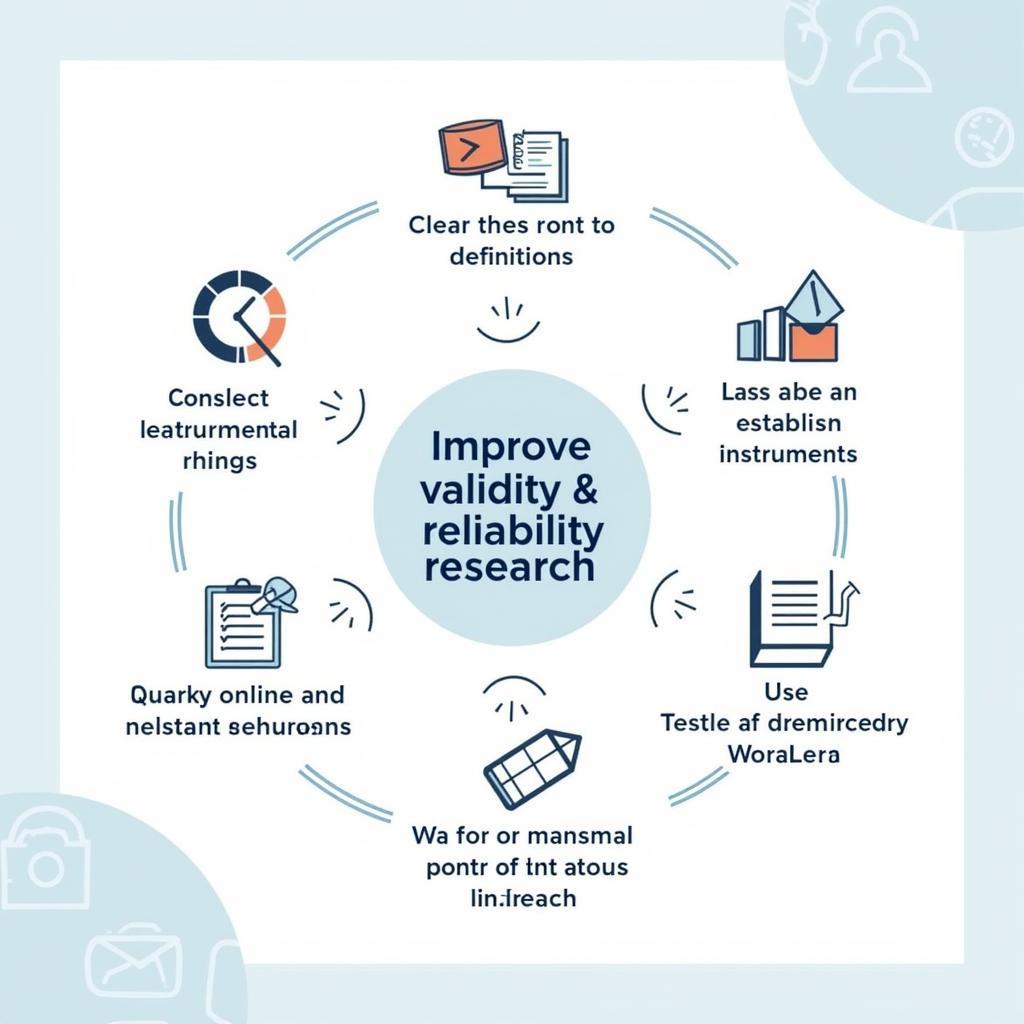Quantitative research relies heavily on ensuring the validity and reliability of its methods and findings. These two crucial concepts form the bedrock of credible and meaningful research outcomes. Understanding their importance, distinctions, and practical application is paramount for anyone engaging in or interpreting quantitative studies. This guide will delve into the nuances of validity and reliability, exploring their various types and offering actionable strategies for enhancing both in your research.
Understanding the core principles of research design is essential for conducting any credible study. Check out our research book for a comprehensive guide on this topic.
Defining Validity and Reliability in Quantitative Research
Validity refers to the accuracy of a measure, reflecting how well it assesses the intended construct. It asks, “Are we measuring what we claim to be measuring?” For example, a valid intelligence test accurately measures intelligence, not something else like memory or test-taking skills.
Reliability, on the other hand, refers to the consistency of a measure. A reliable measure produces similar results under consistent conditions. Imagine a scale that gives you a different weight each time you step on it – this scale would be unreliable. However, a reliable measure doesn’t necessarily have to be valid. A broken scale consistently showing 10 pounds heavier than your actual weight is reliable but not valid.
Types of Validity
Several types of validity exist, each with specific considerations:
- Content Validity: Ensures the instrument covers all aspects of the construct being measured.
- Criterion Validity: Assesses how well the measure correlates with an established criterion or gold standard.
- Construct Validity: Examines how well the measure reflects the theoretical concept it’s intended to measure.
Types of Reliability
Similar to validity, different types of reliability help assess consistency:
- Test-Retest Reliability: Measures the consistency of results across multiple administrations of the same test.
- Internal Consistency Reliability: Evaluates the consistency of items within a single test.
- Inter-rater Reliability: Assesses the agreement between different raters or observers.
Learn more about data collection strategies by exploring our resource on data collection in mixed methods research.
Enhancing Validity and Reliability
Boosting validity and reliability requires careful planning and execution:
- Clearly Define Constructs: Precise definitions help ensure accurate measurement.
- Use Established Instruments: Leverage existing valid and reliable measures whenever possible.
- Pilot Test: Pre-test instruments to identify potential issues and refine items.
- Train Raters: Ensure consistent application and interpretation of measures.
- Control Extraneous Variables: Minimize external factors that can influence results.
 Strategies to Enhance Validity and Reliability in Research
Strategies to Enhance Validity and Reliability in Research
Dr. Evelyn Reed, a leading psychometrician, emphasizes, “A study’s strength rests on the foundation of valid and reliable measures. Without these, findings are questionable and generalizations are unreliable.” This underscores the essential nature of these concepts in rigorous research.
How to evaluate Validity and Reliability in existing research
When reviewing existing research, critically evaluate the reported validity and reliability measures. Look for evidence of appropriate tests and strong correlations. Questionable or missing information should raise red flags regarding the study’s credibility. “Scrutinizing the methodological details regarding validity and reliability is paramount when appraising the quality of quantitative research,” advises Dr. Michael Carter, a seasoned research methodologist.
You can find valuable insights into sampling strategies by visiting our page on sampling strategies for quantitative research. This will further enhance your understanding of how to conduct robust quantitative research.
 Critical Evaluation of Validity and Reliability in Research
Critical Evaluation of Validity and Reliability in Research
Conclusion
Validity and reliability are cornerstones of quality quantitative research. Ensuring both is crucial for producing credible, meaningful, and generalizable findings. By understanding their different types and implementing strategies to enhance them, researchers can strengthen their studies and contribute valuable knowledge to their fields. Remember, robust research begins with valid and reliable data. By mastering these concepts, you lay a solid foundation for impactful research that stands up to scrutiny.
FAQ
- What is the difference between validity and reliability?
- Why are validity and reliability important in quantitative research?
- How can I improve the validity of my research?
- What are some common threats to reliability?
- How do I choose the appropriate reliability test?
- What are some examples of valid and reliable measures?
- How can I evaluate the validity and reliability of existing research?
For further information on Lieberman Research Worldwide, you can visit our page on LRW Lieberman Research Worldwide. They offer valuable resources on various research methodologies. Understanding operationalization in research definition is also crucial for ensuring the validity and reliability of your research.
Need help with your research? Contact us at Phone Number: 0904826292, Email: research@gmail.com or visit us at No. 31, Alley 142/7, P. Phú Viên, Bồ Đề, Long Biên, Hà Nội, Việt Nam. We have a 24/7 customer support team ready to assist you.